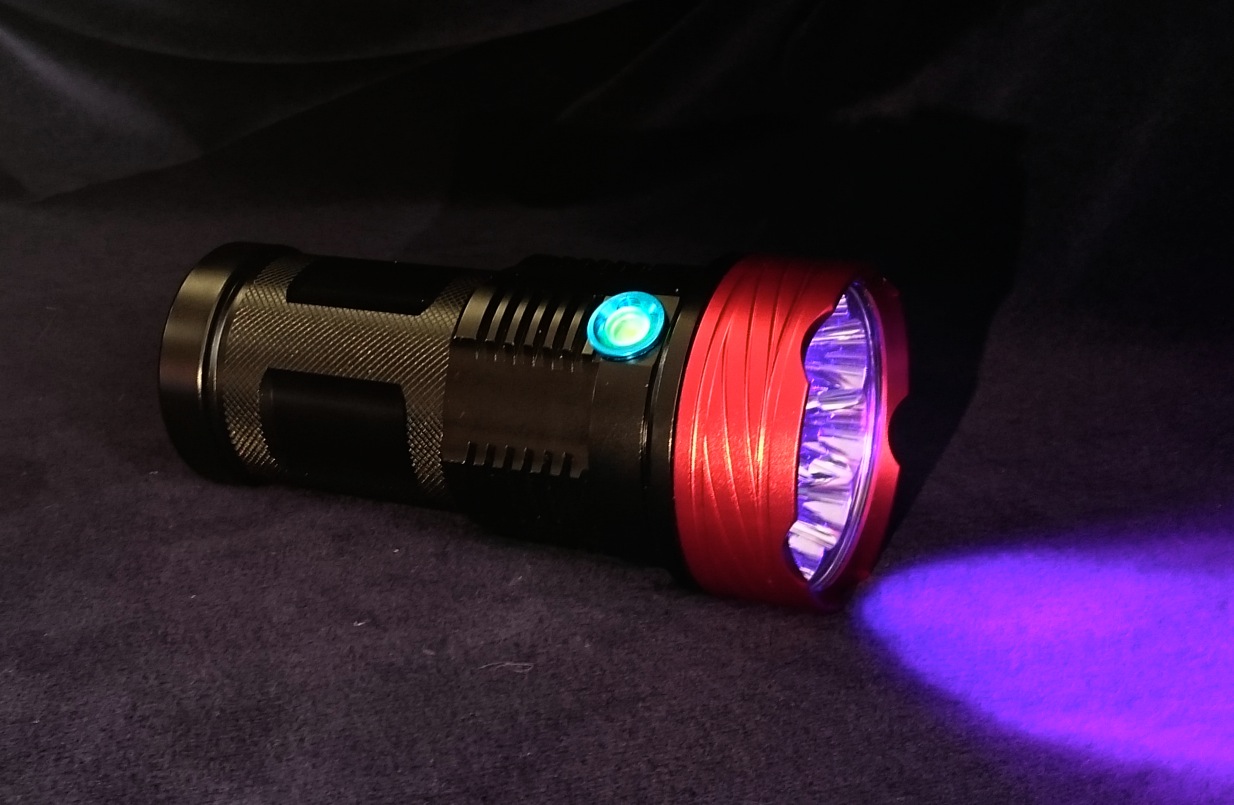
Apparently I'm a principal person, I bought this Bestfire 9-led light last year may from dx and upon finding that the leds were not the promised XP-L but some chinese junk leds, I went to great lengths to get the light returned and get my money refunded . Then a few months later I bought it again to be used as a host. and today I did the mod, my first soup can mod! ![]() The host is neat and well-arranged, lots of opportunities to improve it, with everything accessable: better leds, thicker led-wires, bypassing the R100 resistors before the FETS, bypassing the bottom battery springs that are easily accessable. One improvement was already done for me: the one FET-driver of last may has become a two-FET driver in last november's copy, ledwires were also already a bit thicker:
The host is neat and well-arranged, lots of opportunities to improve it, with everything accessable: better leds, thicker led-wires, bypassing the R100 resistors before the FETS, bypassing the bottom battery springs that are easily accessable. One improvement was already done for me: the one FET-driver of last may has become a two-FET driver in last november's copy, ledwires were also already a bit thicker:

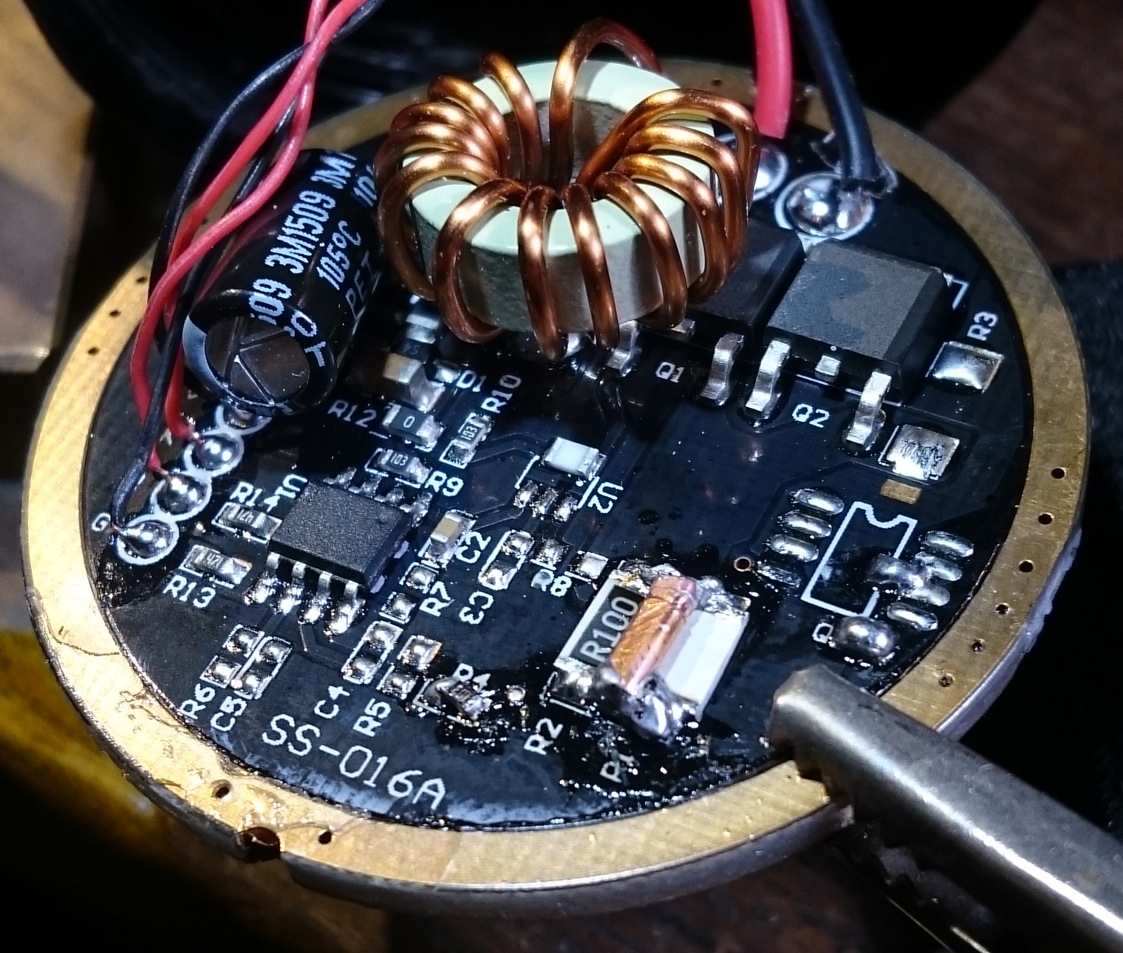
Left the one-FET driver, right the two-FET driver (note the R100 bypass with piece of copper already done)
I first started with replacing the leds, this was going to be a 385nm mega-flooder. I bought 10 LG 3rd gen. 385nm leds on Aliexpress for this mod. I want 1A max per led (for a test of this led on a copper board, see https://budgetlightforum.com/t/-/36866 ), so I did not bother with copper boards. I love watching reflows so I made a video of the swap, it took longer than I thought, I did not realise that 9 leds is quite a number to replace:
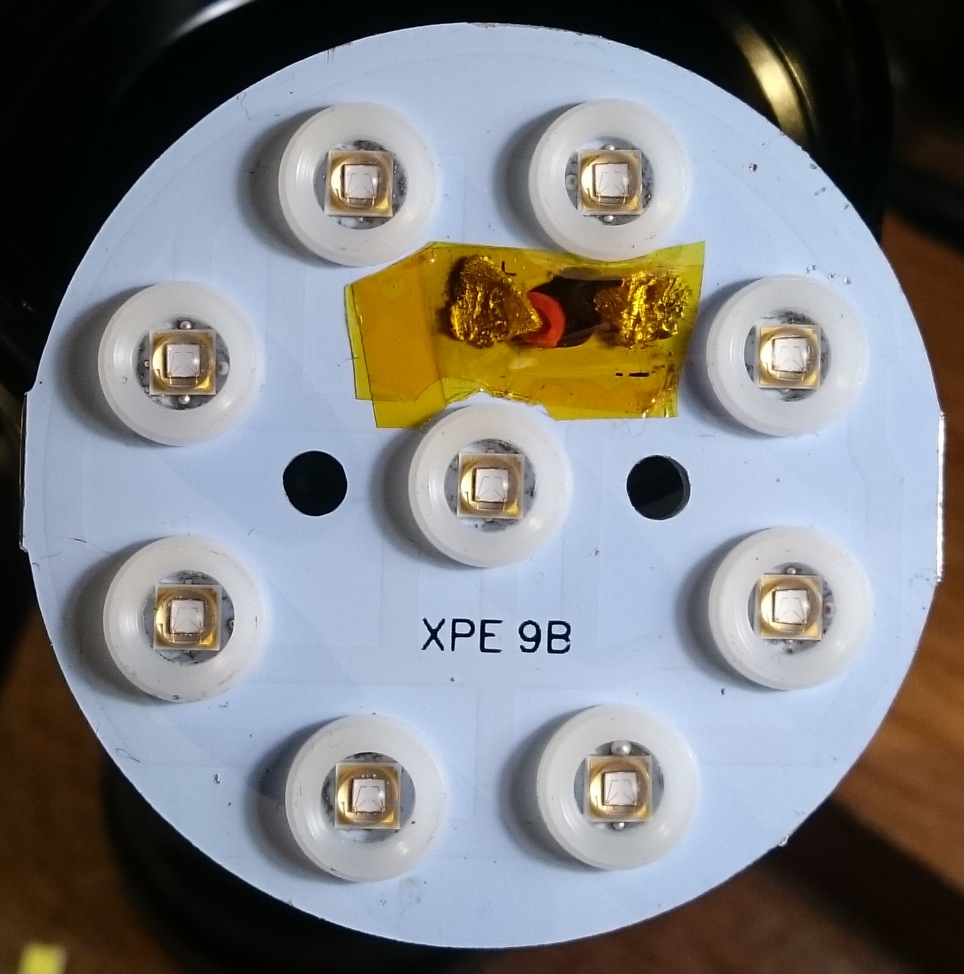
It worked first time, jay!, so I was very curious of the ledwire current in the further stock light. I love my new clamp meter for the ease of use ![]() . I got 4.67A already on four NCR18650BD batteries, that is 500mA per led, not bad. I had to add blobs of solder on top of the batteries to have them make contact to the driver:
. I got 4.67A already on four NCR18650BD batteries, that is 500mA per led, not bad. I had to add blobs of solder on top of the batteries to have them make contact to the driver:
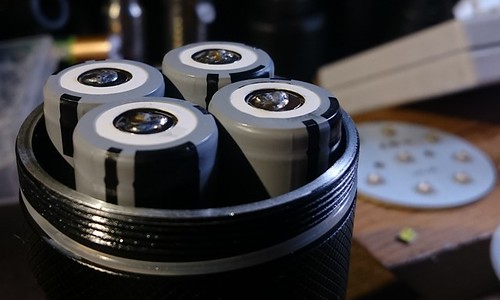
Then I bypassed the two R100 leds on the driver that were in series with the FETS and the current went up to 6.42A, 700mA per led. Then I replaced the ledwires with 18AWG silicon wires and got 8.6A, almost 1A per led which was the goal, any higher I would not trust without DTP copper ledboards. No spring bypasses needed ![]()
Now it appeared that when closing the head, the ledboard by a hair does not touch its shelf on the host, the board-reflector assemby hangs on the outside of the reflector. So a spacer was needed to get the ledboard touching its shelf. I do not like to use chunks of copper, but I did not have anything else than copper. So enter the (modest 1mm thick) copper disc:
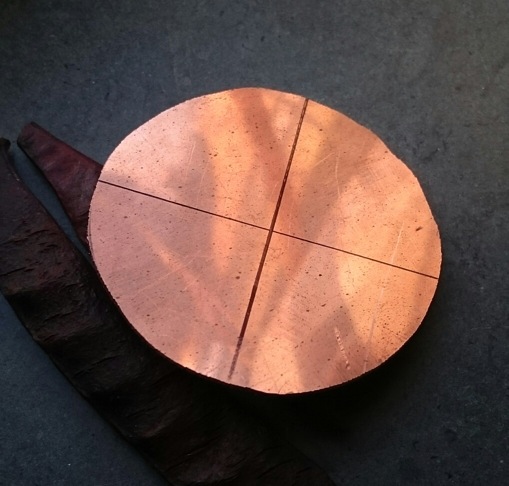
Sanded, holes made and attached to the ledboard (no thermal paste):
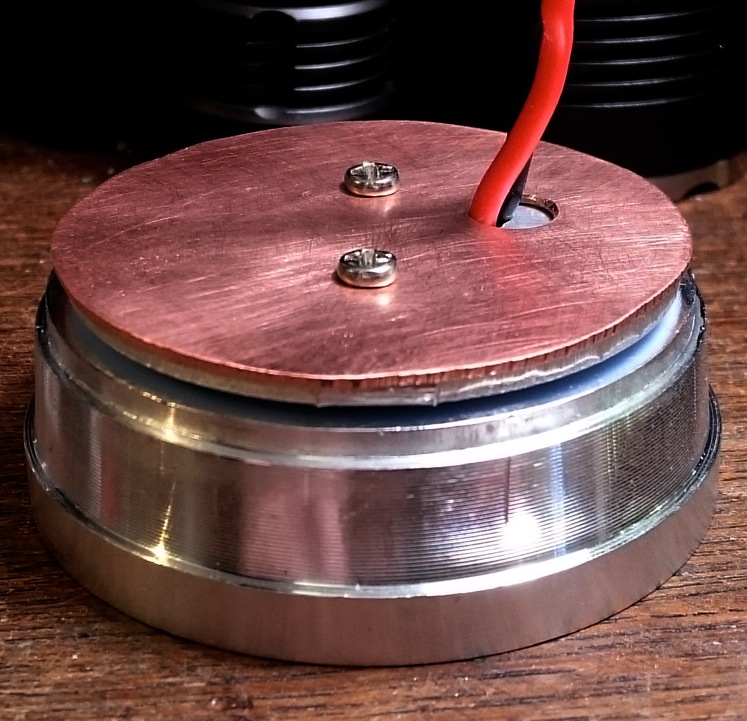
A tiny bit of thermal paste was applied on the shelf to make good contact and everything assembled. Done:
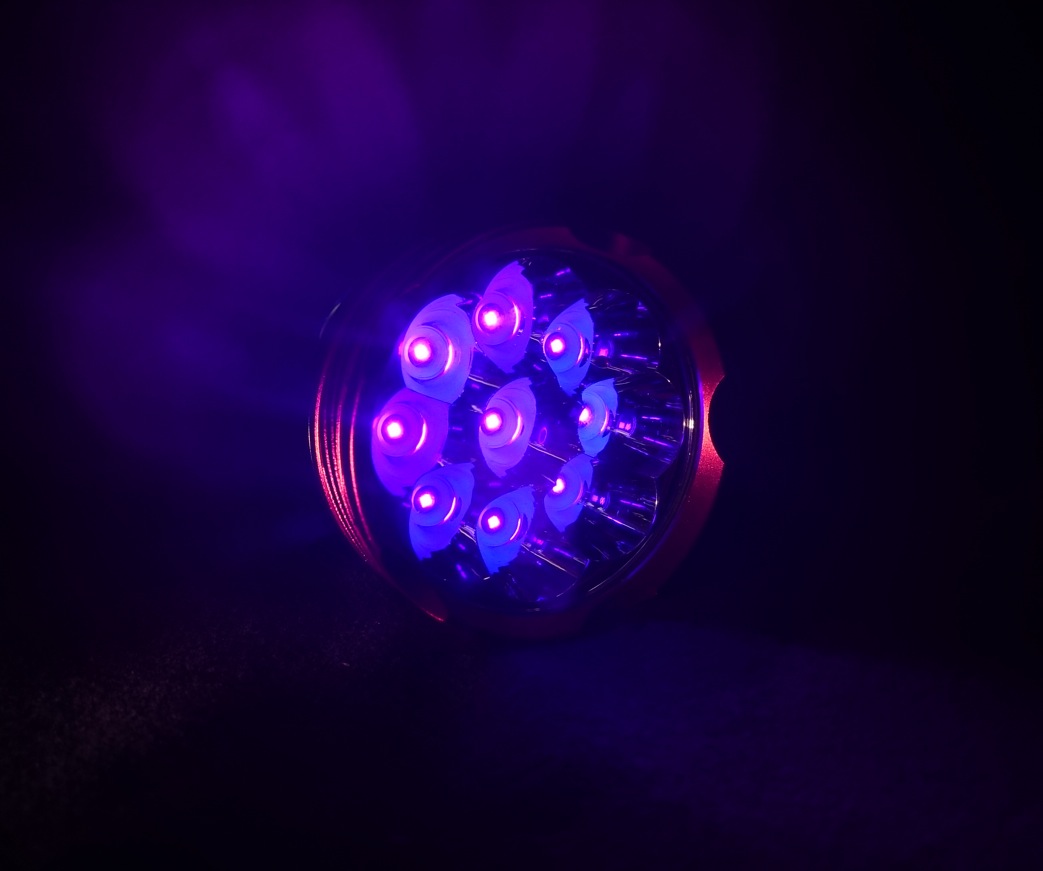
The light projected on the wall with a (overhead projector) lens:

It is a LOT of UV-light:
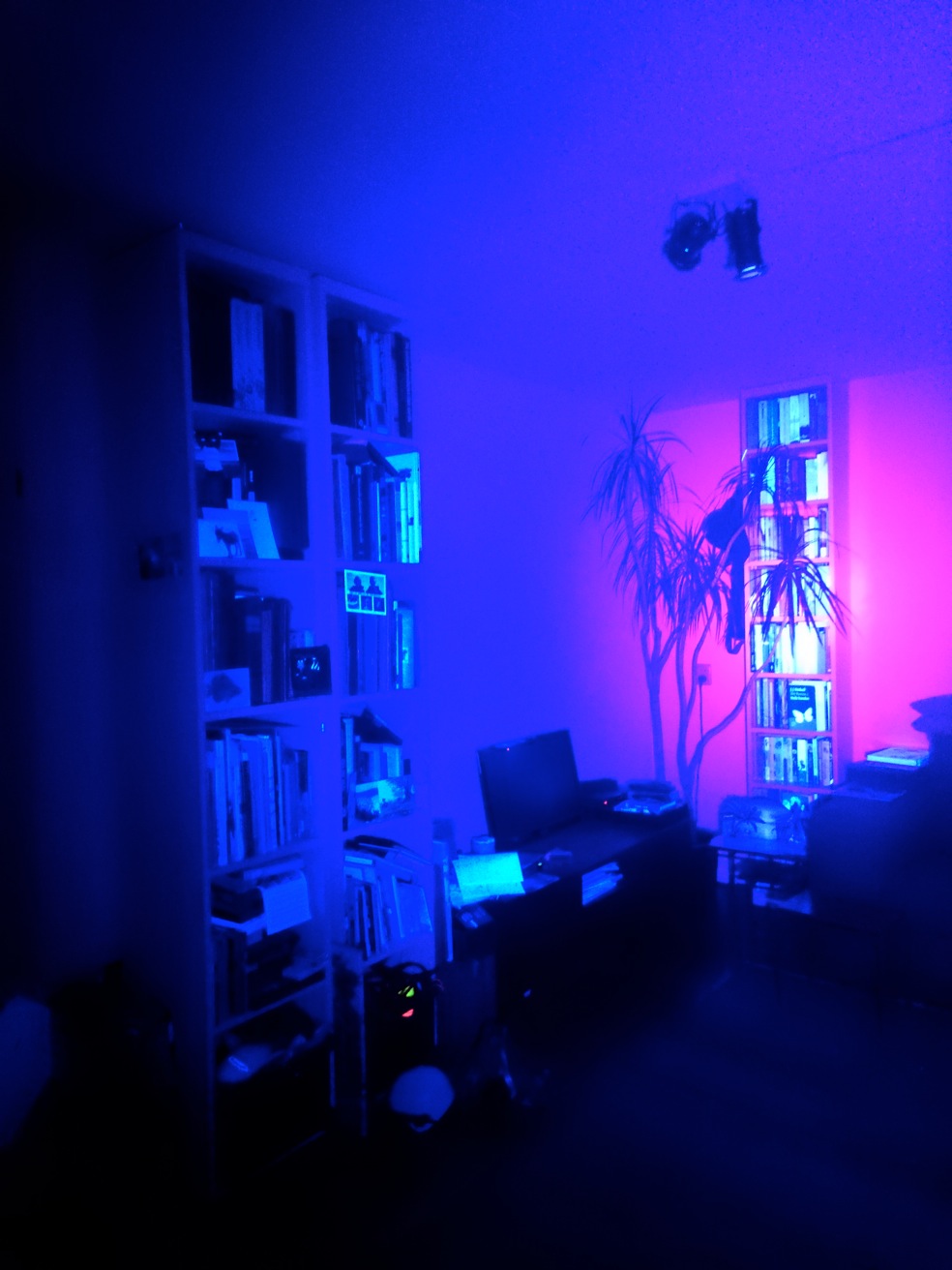
So now what to do with it?, dunno, it was fun to make. Perhaps Hestbech, if he reads this, would like to try it for his amber-searching? ![]()
Anyway, I ordered another one of these hosts for a mega-warm-white-flooder ![]()
Thanks for reading.
